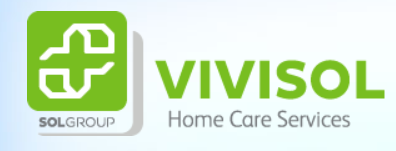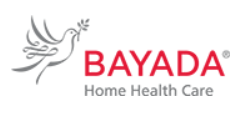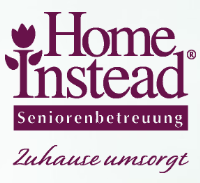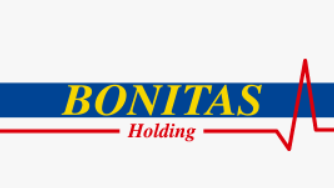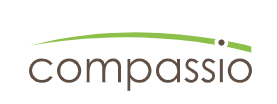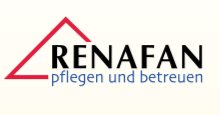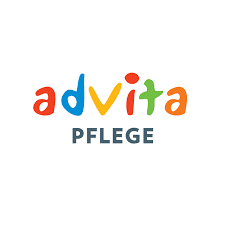Summary
The global homecare market is experiencing significant growth, driven by an aging population and an increase in chronic illnesses. valued at $282 billion, the market is expected to grow at a compound annual growth rate of +7.8% until 2026. Growth in Europe is driven by favorable public policies and the development of healthcare infrastructures.
North America remains the largest market, with Western countries accounting for over 70% of global market share. However, growth prospects are promising in low- and middle-income countries, where the population is ageing rapidly and the middle class is emerging. The market offers both homecare equipment and services, with major players such as F Hoffmann La Roche AG and Koninklijke Philips N.V.
Germany, in particular, has seen its market prosper, with a CAGR of 2.8% between 2010 and 2020, and is expected to maintain this trend due to its aging population requiring ongoing care. The German market is characterized by advanced healthcare and competitive innovation, and projections suggest a continued increase in demand for homecare services.
Emerging trends in the German homecare market
The German homecare market is a dynamic sector, attracting interest from companies and investors alike due to a combination of factors shaping supply and demand. Observations from the analysis provided indicate that the main factors influencing this market are the aging population, the increase in chronic illnesses, supportive government initiatives, the adoption of homecare devices by the population and comprehensive insurance coverage.
Germany, with its highly developed and innovative healthcare industry, ranks third in the world, behind the USA and Japan. This competitive edge is evident in the fields of health technology, pharmaceuticals and biotechnology. When it comes to spending on patient care, Germany exceeds the EU average in all categories, underlining its commitment to healthcare services. The market, valued at over 30 billion USD in 2018, is expected to grow at a rate of around 5.6%, which could increase its size to between 40 and 45 billion USD by 2030. This growth is largely attributed to the increase in the number of elderly people and chronic diseases, such as diabetes, heart conditions and respiratory ailments.
Increasing demand for home healthcare can be anticipated in the near future, supported by public policies and reliance on homecare devices for health management. An examination of the German demographic landscape reveals a sharp increase in the elderly population, with a projection of around 20% of the population reaching the age of over 67 by 2020, and it is estimated that this figure will rise to almost 23% over the following decade. This demographic shift is closely linked to the growing need for healthcare, particularly long-term care. For example, almost half of all homecare beneficiaries require level 2 care, which provides a moderate degree of assistance, while a small percentage require the most intensive level 5 care. The demand for homecare medical staff is critical, and efforts to meet the need have been paramount, including the recruitment of nurses and healthcare workers from other European nations. While the number of healthcare staff is increasing, the vast majority remain female, with women outnumbering their male counterparts in this sector by more than fifteen to one. In addition to conventional home care, Germany is experiencing a boom in assisted living, an attractive option for older people wishing to be independent while still having access to care and services.
Some regions, particularly city-states and areas such as Mecklenburg-Western Pomerania, are seeing a notable number of places available for assisted living, suggesting a growing market for alternative senior living options. If the above trends are taken into account.
Key players shaping the German homecare landscape
The German homecare market is a cornerstone of the country's strong healthcare sector, with a number of influential players driving innovation and providing a range of services and equipment to patients. Below, we present some of the key players in this market, each contributing to the diversity of homecare offerings designed to meet Germany's growing demand.
- F Hoffmann La Roche AG: This global healthcare company is known for its commitment to research and development in the pharmaceutical and diagnostic fields. In the homecare segment, Roche offers a plethora of home diagnostic tools and equipment that facilitate the monitoring and management of various health problems, enabling patients to retain a degree of independence in the management of their health.
- Sunrise Medical: A leading producer of home mobility and seating solutions, Sunrise Medical's products, such as wheelchairs and walkers, enable people with reduced mobility to move around their homes and communities more easily. The company's focus on user-centered design ensures that its products are not only functional, but also enhance users' quality of life.
- Almost Family Inc: As a provider of home nursing services, Almost Family caters for a wide range of needs, from care for the elderly to rehabilitation services for those recovering from injury or surgery. The company is renowned for its patient-centered approach, which emphasizes personalized care plans to promote healing and independence at home.
- National HealthCare Corporation: With a long-standing presence in the long-term healthcare sector, this company is extending its expertise to home care. Offering a wide range of services such as skilled nursing care and therapies, National HealthCare Corporation ensures that patients receive comprehensive care in the comfort of their own homes.
- Acelity L.P.: Acelity focuses on advanced wound care and regenerative medicine, with products that are integral to post-surgical care and chronic wound management in the home. Its innovative solutions play an essential role in the healing process, helping to improve outcomes for patients at home.
- Koninklijke Philips N.V.: Philips, a world-renowned brand, offers a multitude of healthcare technology products. In the homecare market, its offering includes a range of monitoring devices, respiratory care solutions and telehealth services that facilitate remote care and medical consultations. These key players, with their diverse and specialized contributions, form a strong, interconnected network that supports the ever-expanding German homecare market. Their innovations in homecare equipment and services help not only to provide essential care, but also to maintain Germany's reputation for quality.
to understand this market
Detailed content
 Inforamtion
Inforamtion
- Number of pages : 30 pages
- Format : Digital and PDF versions
- Last update : 06/04/2023
 Summary and extracts
Summary and extracts
1 Market summary
1.1 Introduction
Home medical assistance is a market in the health industry. In order to help patients thrive at home, health service providers have gradually expanded their services by visiting patients and developing a range of home support services.
Home health care or home medical assistance is the treatment provided to patients in their homes and generally involves the use of medical equipment. However, it is important to distinguish between home medical assistance (home care) from home hospitalization (otherwise known as the home hospitalization program), the second requiring more intensive care.
In general, home medical assistance aims to help people 3 types of patients following:
- Patients with disabilities or chronic diseases (such as those requiring recurrent treatment);
- The elderly who can live at home but need regular monitoring of their health status;
- Patients recovering from an accident or injury and who require physiotherapy (EA) or regular occupational therapy.
The German market has been growing rapidly, at a CAGR of 2.8% from 2010 to 2020, and it is expected to continue on this trend in the following years. It is mainly driven by the ageing population and increasing of long-term conditions which require comprehensive, continuous care.
As demand increases, the government has faced the issue of understaffed nursing homes and hospitals by implementing provisions in order to appropriately care for the elderly.
1.2 Key figures of the world market
In Europe, market growth is driven by public policy support and the development of healthcare infrastructure. Rising healthcare costs and increasing government initiatives (***) have made home healthcare more affordable for the population, thereby driving the market growth.
Globally, it was valued at *** billion in ****, according to Grand View Research, and is ...
1.3 The German home healthcare market
Germany has a highly developed and innovative health industry and ranks third after the United States and Japan. German industry stands out in particular in the fields of health technology, pharmaceuticals and biotechnology.
This can also be observed by comparing German expense on patient care with the EU average one. ...
1.4 Covid Impact
The coronavirus outbreak has affected the market in several ways. The people involved in the home healthcare market are by definition the most vulnerable to the virus, therefore, countries had to develop appropriate responses to protect them.
From a human point of view, the situation had major consequences for caregivers and ...
2 Demand analysis
2.1 Determinants of demand
The main driver of the home healthcare market is clearly the progressive seniorization of the population, a trend that has been a constant of the last decades in the countries of the Western world. Germany is among the first countries in Europe for a percentage of the population over **, and the ...
2.2 Market trends
The health industry in Germany is traditionally very strong and competitive worldwide, and as such paves the way for innovation. Thus, these general characteristics also affect the home care segment and influence trends in this market.
The trends in the German home healthcare market can be summarised in three main aspects: ...
2.3 Pathologies leading to home-care needs
In Germany there are around * million patients who receive homecare services. The two largest areas are wound treatment and pressure ulcer prophylaxis (***).
Breakdown of the pathologies of home care patients Germany, ****, in % Source: Pflegemarkt
The number of enteral nutrition supplies is *.* million patients and parenteral nutrition *.* million patients. In ...
2.4 The boom of assisted living
When talking about assisted living, in German Betreutes Wohnen, we are referring to a form of living for senior citizens in old age alongside classic nursing home accommodation or outpatient care at home. This way of living enables people with special needs to live independently and, depending on their individual needs, ...
3 Market structure
3.1 Market structure
Health insurance in Germany is compulsory and therefore offers almost universal coverage. The German medical system is divided into public social health insurance (***), and there are many criteria to determine who is insured. Employees typically have insurance at SHI, but people whose income exceeds a fixed threshold or belongs to a ...
3.2 Providers of home care devices
Homecare consists of a service and of multiple devices, especially in long-term care scenarios.
Device providers can be medical supply stores, pharmacies, medical retailers or the industry, or the manufacturers of the products themselves.
Since the supply of products is always closely related to the provision of assistance-related services, the supply ...
3.3 Shortage of medical staff and home care workers
In ****, according to the OECD, the number of home medical staff for long-term care in Germany was just under * per *** people over ** years of age, which places it among the countries with the lowest density of home medical staff.
To address the supply shortage, government measures have been put in place ...
4 Analysis of the offer
4.1 An overview of prices
The home healthcare market includes a wide range of products (***) and services. This means that prices in this market vary depending on the equipment and services required for the patient's condition. Nevertheless, the Commonwealth organization believes that home medical assistance can help to reduce the costs of the same treatment in ...
4.2 Products and services
As explained before, the home healthcare market is mainly made up of products and services.
The products on the market can be segmented into:
Home diagnosis and monitoring devices; Therapeutic devices for home care; Home mobility devices Medical supplies.
Home diagnosis and monitoring devices consist of products of testing, screening, and ...
4.3 Innovation
Innovation and e-health
Germany's technological tradition has already reached the home healthcare market and is increasingly accepted by the population. In ****, investments in e-health amounted to *** million euros and in the medium term are expected to increase by **% per year. Innovations in software and equipment for home medical care are not ...
5 Rules and regulations
5.1 Regulations in force
Germany operates on the basis of an insurance system, with health professionals working for private companies for-profit. In the German health system, hospitals are companies, often owning hospital chains and related ambulatory and aftercare services. However, Germany has a public regulated health insurance system. German legal regulations directly influence the home ...
5.2 Covid-related regulations
The Krankenhauszukunftsgesetz (***), or Hospital Future Act, brings about legal changes for family carers and those in need of care. It was passed by the Bundestag on September **, **** and does not require the consent of the Bundesrat.
It has been written in order to support people in need during this time of ...
6 Positioning of the actors
6.1 Segmentation of actors
The German market for home medical assistance is a heterogeneous market: it includes large high-tech companies but also of small and medium-sized care and assistance companies. As this market involves a diversified range of products and services depending on the patient's situation, this difference within the segment is understandable.
In addition, ...
- Fresenius Medical Care
- VIVISOL Home Care Services
- BAYADA Home Health Care
- Pflegetiger (Caretiger) GmbH
- Home Instead GmbH & Co. KG
- Bonitas Holding GmbH
- Compassio GmbH & Co. KG
- Deutsche Fachpflege Holding GmbH (Advent International Group)
- Bestens umsorgt (KORIAN Group)
- Renafan GmbH
- Advita Pflegedienst GmbH
 List of charts
List of charts
- Size of the home health care market
- Development of the population over the age of 67
- Taux de soins de longue durée, par groupe d'âge
- Personnes nécessitant des soins de longue durée, par type de soins
- Gesundheitsausgaben nach Ausgabenträgern
All our studies are available online in PDF format
Take a look at an example of our research on another market!
Companies quoted in this study
This study contains a complete overview of the companies in the market, with the latest figures and news for each company. :
 Choosing this study means :
Choosing this study means :
Access to more than 35 hours of work
Our studies are the result of over 35 hours of research and analysis. Using our studies allows you to devote more time and added value to your projects.
Benefit from 6 years' experience and over 1,500 industry reports already produced
Our expertise enables us to produce comprehensive studies in all sectors, including niche and emerging markets.
Our know-how and methodology enable us to produce reports that offer unique value for money.
Access to several thousand articles and paid-for data
Businesscoot has access to all the paid economic press as well as exclusive databases to carry out its market research (over 30,000 articles and private sources).
To enhance our research, our analysts also use web indicators (semrush, trends, etc.) to identify market trends and company strategies. (Consult our paying sources)
Guaranteed support after your purchase
A team dedicated to after-sales service, to guarantee you a high level of satisfaction. +44 238 097 0676
A digital format designed for our users
Not only do you have access to a PDF, but also to a digital version designed for our customers. This version gives you access to sources, data in Excel format and graphics. The content of the study can therefore be easily retrieved and adapted for your specific needs.
 Our offers :
Our offers :
the market for home medical assistance | Germany
- What are the figures on the size and growth of the market?
- What is driving the growth of the market and its evolution?
- What is the positioning of companies in the value chain?
- Data from several dozen databases
5 reports pack (-15%) DE Germany
- 5 reports at €75.6 excluding VAT per study to choose from our German catalogue for 12 months
- Save 15% on additional studies purchased
- Choose to be refunded any unused credit at the end of the 12-month period (duration of the pack)
See the terms and conditions of the pack and the refund of unused credit.






